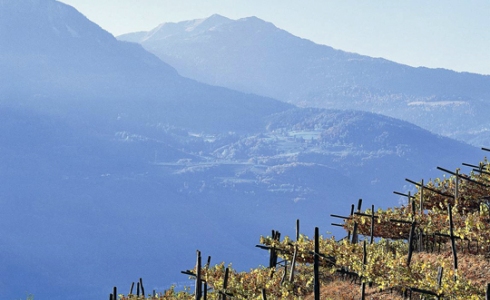

 Wine for Shellfish?
Wine for Shellfish?
We've found 179 wine(s) in our Italian Wine Guide which are good for Shellfish.
Read more

Italy’s northernmost region of Trentino-Alto Adige is surrounded by the Alps and 99% of it is made up by mountains, therefore agriculture has always been a great challenge here. Only 5% of the agricultural land is situated under 500 meters altitude and only 15% of the stony and rocky fields are actually suitable for growing crops.
The region is divided into two zones: Trentino, located towards south, barely touching the northern tip of Lake Garda, with Trento as the capital of both the region and the zone. Finally Alto Adige, which takes its name from the Adige river, is located north of Bolzano and also known as South Tyrol.
Archaeological findings reveal that the activity of producing wine dates back to around 2700 BC. It has been discovered that Romans used wooden barrels for producing and transporting wine. Archaeologists also found vines tightened around wooden frames, the precursors of espaliers, which can still be seen today, as they are used between South Tyrol and Verona.
From a political perspective, the region has had a stormy history, being ruled by the Roman Empire, the Habsburgs and the Austrian Empire, from 1363. After the First World War, in 1919, Trentino-Alto Adige became one unit that was ceded by Austria to Italy. Today, the region is one of the richest in the country with an almost non-inexistent unemployment rate, partly due to tax exemption from the Italian state.
German and Italian language are spoken in the region, therefore all road signs and indicators are written in both languages (however, here, in the Italian Wine Guide, we mainly stick to the Italian names). Apart from differences in language, the region is known for its winemaking skills and efficiency, Trentino-Alto Adige now having the highest proportion of DOC wines in the country, the rest being predominantly IGT.
Although terrific wonderful wines, such as from Chardonnay, Sauvignon and Pinot Grigio grapes, are produced in the area, Trentino-Alto Adige is best known for its red wine. However, white wines have gained ground recently and can be compared to the best white wines in Europe. The chilly Alps offer great opportunities to cultivate a refined red wine, and for some time now, producers have focused on single vineyards wine, with very promising results.
The local grape of Alto Adige is Lagrein, while Teroldego and Marzemino are grape varieties representative for Trentino. These grapes offer distinctive red wines which match the quality of Merlot, Cabernet and sometimes Pinot Nero. Other varieties are also grown, such as Schiava, with quite promising results.
Wine is important in Trentino-Alto Adige, which is why the region provides exciting opportunities for wine tourists. Trentino-Alto Adige has beautiful spectacular wine routes and every year there are several important wine fairs held in the region.
Between April and May the Bozner Weinkost festival is organized in Bolzano and in Trento there is Mostra dei Vini in Trentini. Tourists are welcome to visit the wine museum Castel Marreccio in Bolzano, or the Vinoteque Alois Lageder in Bolzano, the Enoteca Zum Kuckuck in Cermes, the Enoteca Johnson & Dipoli in Egna/Neumarkt or Luni in Trento.
Read more about the wines from Trentino-Alto Adige by clicking i the top menu in the right side.
Italy extends over 10 latitudes – from continental climate to subtropical climate?